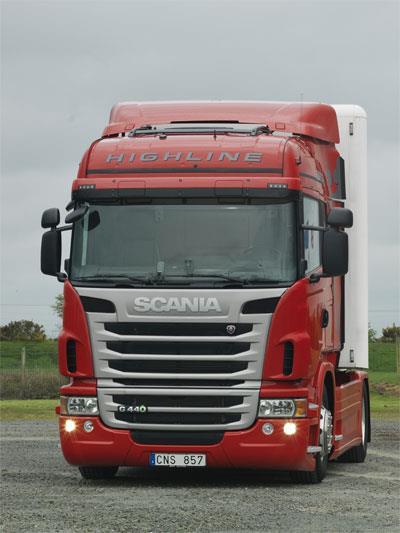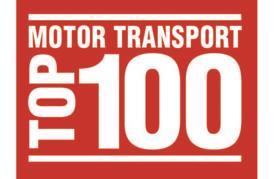
Amid fears of higher costs and inferior mpg, MT test drives the new Euro-6 Scania G4409 LA 4x2 MNA.
Fears of worse fuel consumption, extra weight and higher costs are expected to prompt operators to accelerate fleet renewal programmes to get the last Euro-5 trucks before 2014. MT’s first Euro-6 test set out to find if their fears are justified.
Scania is known for its EGR engines in the UK, but its Euro-5 engine range also includes units employing SCR. When Euro-6 emission limits are implemented in 2014, Scania, like most other manufacturers, will use both EGR and SCR.
Technical profile
Aside from the Euro-6 badges, only the AdBlue tank on the side of the chassis indicates that this is not your common-or-garden Scania.
Its DC13 engine is badged as a 440, the lower of the two Euro-6 power ratings for this 12.7-litre unit (the other is 480). The true power ratings are 434hp and 473hp respectively. The power and torque curves look identical to those at Euro-5.
The test vehicle is also fitted with a new cruise control system called Scania Active Prediction (SAP). This uses GPS, coupled with three-dimensional mapping provided by US-based Navteq, to provide information about the terrain for up to 3km ahead, refining the exact setting of the cruise control to take account of gradients. The objective is to save fuel: Scania reckons improvements of up to 3% are possible on undulating terrain.
On the road
With power and torque curves identical to a Euro-5 G-series 440hp, we were not expecting this Euro-6 unit to feel much different. Nor did it. The combined effect of changing the gearbox’s ratio, the final-drive ratio and tyre size shortens the overall gearing when running in top.
At MT’s 85km/h motorway limit, engine speed goes up from 1,096rpm to 1,186rpm, bringing it close to the middle of the peak torque plateau between 1,000rpm and 1,300rpm.
For those operators who still choose to set their speed limiters at 90km/h, engine speed is 1,256rpm – still a moderate figure.
Productivity
Much more evidence is required from future road tests before we can say with confidence that Euro-6 trucks will match their Euro-5 equivalents in terms of fuel economy.
Nevertheless, this Scania G440 at 40 tonnes is a very promising first indication. Returning 9.20mpg, it comfortably beat the 8.97mpg achieved by the Mercedes-Benz Axor 1840L, the best of the Euro-5 4x2 tractors tested at 40-tonne GCW.
There is good news too on AdBlue consumption, which worked out at just 2.9% of fuel consumption. This will probably prove typical for most Euro-6 trucks that use a combination of EGR and SCR, and is much lower than the Euro-5 average of 4%-5% of fuel usage.
Kerbweight for this G440 at Euro-6 is 7,350kg. That includes a full 400-litre diesel tank and 75-litre AdBlue tank, plus an effective, but rather weighty, retarder. Hooked up to a 7,000kg trailer, that leaves 25,650kg for payload at 40 tonnes GCW. The like-for-like weight of a Euro-5 Scania G440 4x2 is 7,248kg, just over 100kg less. Most of that is down to the AdBlue tank and its contents.
Conclusion
We already know that Euro-6 trucks will cost more to buy than their Euro-5 equivalents, simply because we have to pay for the additional emissions reduction kit and to help foot the manufacturers’ Euro-6 R&D expenditure, which by all accounts was substantial.
The RRP of this Euro-6 Scania G440 LA 4x2 MNA Highline tractor is about £95,000. It is covered by Scania’s standard two-year
full repair and maintenance warranty.
Fears about weight aren’t such a concern on the strength of our first Euro-6 test. This Scania has not piled on that many kilograms, unless you are in a particularly weight-sensitive sector.
Fuel consumption, of course, remains a really critical part of the operating equation, especially with the bulk diesel price hovering around 115p/litre.
The Euro-6 news looks encouraging. We know that truck manufacturers have explored every nook and cranny of a truck – not just its engine – in search of fuel savings. It looks like Scania has found a rich seam to tap in its clever pro-active cruise control system.






















![Northgate Cannock workshop[58334]](https://d2cohhpa0jt4tw.cloudfront.net/Pictures/100x67/3/3/4/21334_Northgate-Cannock-workshop58334.jpg)